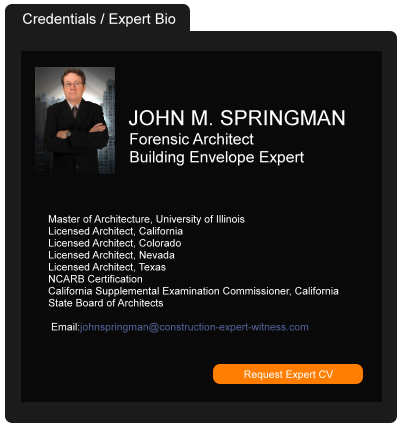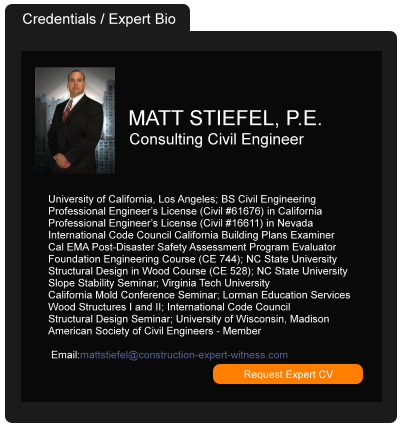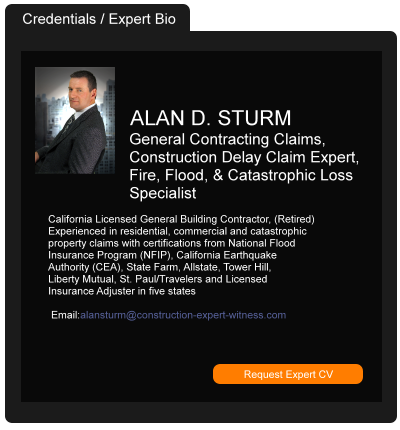Gone Fishing: Tenant’s Insurer Casts A Line Seeking To Subrogate Against The Landlord
October 17, 2022 —
William L. Doerler - The Subrogation StrategistIn J&J Fish on Ctr. Str., Inc. v. Crum & Forster Specialty Ins. Co., No. 20-cv-644-bhl, 2022 U.S. Dist. LEXIS 16361, the United States District Court for the Eastern District of Wisconsin (District Court) recognized that “[t]here will be no further fish fries on Center Street until someone pays to repair the collapsed floor at J&J Fish on Center Street, Inc. (J&J Fish).” The contenders were: 1) J&J Fish; 2) its’ insurer, Crum & Forster Specialty Insurance Company (Insurer); and 3) J&J Fish’s landlord, Vision Land, LLC (Vision). Recognizing Insurer’s right to subrogate against Vision based on the terms of the parties’ lease, the District Court held Insurer owed J&J Fish coverage for the losses it sustained, but that Insurer could subrogate against Vision for anything it had to pay J&J Fish.
In J&J Fish, Vision and J&J Fish signed a lease (Lease) for a building (the Building) located in Milwaukee, Wisconsin. The Lease required Vision to “purchase and keep in full force and effect on the building(s) . . . insurance against fire and such other risks as may be included in all-risks policies . . .” Vision, however, never obtained any insurance on the Building. Pursuant to the Lease, Vision also agreed to “maintain and repair the structure including the slab floor and exterior walls of the Premises.”
With respect to J&J Fish, the Lease required J&J Fish to maintain “Physical Damage insurance, including but not limited to fire . . . and all other risks of direct physical loss as insured . . . for the full replacement cost of all additions, improvements (including leasehold improvements) and alterations to the Premises.” J&J Fish purchased a commercial property and casualty insurance policy (the Policy) from Insurer. The Policy covered “additions, improvements . . . and alterations” as the Lease required. In addition, it insured the Building itself against “collapse,” subject to certain exceptions.
Read the court decisionRead the full story...Reprinted courtesy of
William L. Doerler, White and Williams LLPMr. Doerler may be contacted at
doerlerw@whiteandwilliams.com
RCW 82.32.655 Tax Avoidance Statute/Speculative Building
August 29, 2018 —
Scott R. Sleight - Ahlers Cressman & Sleight PLLC BlogWith land prices increasing, developers are looking for opportunities to save on development costs, including cost saving tax strategies. Thus, we have seen increasing interest in development strategies that offer tax savings. One strategy is speculative building: Owners of property who self-perform construction avoid sales tax and B&O tax on the self-performed scope. See Blog Article Posted April 9, 2013, titled What Is A Speculative Builder? In addition, the Department of Revenue has provided an explanation of speculative building.
Read the court decisionRead the full story...Reprinted courtesy of
Scott R. Sleight, Ahlers Cressman & Sleight PLLCMr. Sleight may be contacted at
scott.sleight@acslawyers.com
Electronic Signatures On Contracts: Are They Truly Compliant?
April 10, 2023 —
Rebecca S. Glos - ConsensusDocsElectronic Signatures On Contracts: Are They Truly Compliant
As companies move to work-from-home situations in the wake of the COVID-19 pandemic, the issue of whether electronic signatures are legally recognized becomes more relevant. For many platforms, an electronic signature merely requires logging in, clicking a button, or typing your name. This process, which replaces the mighty pen and quill, is so effortless that oftentimes an electronic signature may feel like it does not carry the same weight as a handwritten signature. Thus, the question that we should be asking ourselves is whether the law recognizes this type of signature as being valid? Additionally, if electronic signatures are, indeed, valid, are there exceptions on whether they can be used?
Difference Between “Electronic” And “Digital” Signatures
Before delving into this issue, an understanding of some related terms may be helpful. In basic terms, an electronic signature (or “e-signature”) is any signature created or captured through a computer or other electronic device. Electronic signatures can include touch-sensitive screens where you use your finger or a stylus to sign your name as you would on a paper document. Electronic signatures can also include forms where you merely type in your name and perhaps other identifying information, then check a box stating that you intend to sign the document. They cover the full range of technologies and solutions to create signatures electronically such as:
- Clicking “I Agree” on a website;
- Signing with your finger on a mobile device;
- Typing your name or PIN into an online form; or
- Using e-signature software
Read the court decisionRead the full story...Reprinted courtesy of
Rebecca S. Glos, Watt, Tieder, Hoffar, & Fitzgerald, LLP (ConsensusDocs)Ms. Glos may be contacted at
rglos@watttieder.com
Construction Litigation Roundup: “Too Soon?”
July 02, 2024 —
Daniel Lund III - LexologyNot at all, said the Louisiana Supreme Court, in a case dealing with the timing of filing of a claim for indemnity.
In the case, a Louisiana intermediate appellate court had earlier ruled in very short order on a supervisory writ application (reversing the trial court) that a claim for indemnity (based upon an indemnity clause in a construction contract) was “premature” until a “determination that damages are actually owed and the indemnitee sustains a loss. … At this time, the lawsuit is still pending against [the putative indemnitee], and no determination of liability had been made; thus, there is no obligation for indemnity and defense costs. … Stated differently, indemnity (or reimbursement) is not available at this time because [the indemnitee] has not discharged a liability which [the indemnitor] should have assumed or otherwise suffered any loss or damages. … Accordingly, [the] cause of action for indemnity and defense is not ripe for adjudication.” Bennett v. Demco Energy Servs., LLC, 2023-0581 (La. App. 1 Cir. 09/11/23); 2023 La. App. LEXIS 1449.
Read the court decisionRead the full story...Reprinted courtesy of
Daniel Lund III, PhelpsMr. Lund may be contacted at
daniel.lund@phelps.com
Ruling Closes the Loop on Restrictive Additional Insured Endorsement – Reasonable Expectations of Insured Builder Prevails Over Intent of Insurer
July 31, 2019 —
Theodore L. Senet, Esq., Jason M. Adams, Esq. and Clayton Calvin - Gibbs GiddenOn June 5, 2019, the Court of Appeal in
McMillin Homes Construction, Inc. v. National Fire & Marine Insurance Company, 35 Cal. App. 5th 1042 (Cal. Ct. App. 2019) issued an important opinion on the scope of additional insured insurance coverage for developers and general contractors in California. Specifically, the “care, custody and control” (“CCC”) exclusion will be read to only exclude coverage for additional insureds who exercised exclusive control over the damaged property. Thus, general contractors who share control of the property with their subcontractors, as is typical on most projects, will not be denied coverage under this exclusion.
I. Facts & Procedural History
McMillin Homes Construction, Inc. was a Southern California developer and general contractor. In 2014, homeowners sued McMillin for roofing defects in a case called
Galvan v. McMillin Auburn Lane II, LLC. Pursuant to a subcontract, the roofer, Martin Roofing Company, Inc., provided McMillin with additional insured coverage under Martin’s general liability insurance policy. The insurer, National Fire and Marine Insurance Company, covered McMillin under an ISO Form CG 20 09 03 97 Additional Insured (“AI”) endorsement. After McMillin tendered its defense of the Galvan lawsuit under the AI endorsement, National Fire declined to provide McMillin with a defense to the homeowners’ lawsuit, relying on a CCC exclusion contained in the AI endorsement for property in the care, custody or control of the additional insured. McMillin then sued National Fire for breach of the policy, bad faith and declaratory relief in
McMillin Homes Construction, Inc. v. National Fire & Marine Insurance Company.
In
McMillin Homes, the trial court found the CCC exclusion in the AI endorsement applied and held in favor of the insurer, National Fire. The trial court found the exclusion for damage to property in McMillin’s “care, custody, or control” precluded coverage for the roofing defect claims, as well as any duty on the part of the insurer to defend the home builder, McMillin. McMillin filed an appeal from the trial court’s ruling.
II. Case Holding
The Court of Appeal reversed to hold in favor of McMillin, interpreting the CCC exclusion narrowly and finding a duty on the part of the insurer to defend the general contractor pursuant to the AI endorsement on the roofer’s insurance policy. It held that for the CCC exclusion to attach, it would require the general contractor’s exclusive control over the damaged property, but here, the general contractor shared control with the roofer. The Court of Appeal noted that where there is ambiguity as to whether a duty to defend exists, the court favors the reasonable belief of the insured over the intent of the insurer. Here, that reasonable belief was that the coverage applied and the exclusion was narrow.
The Court of Appeal relied upon
Home Indemnity Co. v. Leo L. Davis, Inc., 79 Cal. App. 3d 863 (Ct. App. 1978) (“Davis”), as a judicial interpretation of the CCC exclusion. That case synthesized a string of case law into a single conclusion: that courts may hold the exclusion inapplicable where the insured’s control is not exclusive. In the opinion in McMillin Homes, coverage turned upon whether control was exclusive: “[t]he exclusion is inapplicable where the facts at best suggest shared control.” The Court of Appeal stated the “need for painstaking evaluation of the specific facts of each case. Here, McMillin coordinated the project’s scheduling, but Martin furnished the materials and labor and oversaw the work; they therefore shared control.
Even if the rule in Davis did not apply and the exclusion was found to be ambiguous, the court stated that “control” requires a higher threshold than merely acting as a general contractor. Liability policies are presumed to include defense duties and exclusions must be “conspicuous, plain, and clear.” Furthermore, because “construction defect litigation is typically complex and expensive, a key motivation [for the endorsement] is to offset the cost of defending lawsuits where the general contractor’s liability is claimed to be derivative.” This is especially true because the duty to defend is triggered by a mere potential of coverage. Under the insurer’s construction of the exclusion, coverage would be so restrictive under the AI endorsement that it was nearly worthless to the additional insured.
III. Reasonable Expectation of the Insured Prevails over the Intent of the Insurer
Like most commercial general liability policies, National Fire’s policy excluded coverage for property damage Martin was contractually obliged to pay, with an exception for “insured contracts.” Typically, “insured contracts” include prospective indemnification agreements for third party claims. The National Fire policy contained a form CG 21 39 Contractual Liability Limitation endorsement, which deleted indemnity agreements from the definition of “insured contracts” to effectively preclude coverage for the indemnity provision between McMillin and Martin. National Fire argued that this endorsement demonstrated its intent to exclude coverage to McMillin for the homeowners’ defect lawsuit. The Court of Appeal stated that the insurer’s intent is not controlling and that the insureds reasonable expectation under the AI endorsement would control. As a result of its ruling, the Court also dealt a significant blow to the argument that the CG 21 39 endorsement is effective as a total bar to additional insured coverage for all construction defect claims.
IV. Conclusion
The decision is good news for developers and general contractors who rely on subcontractors to provide additional insured coverage. Unless the general contractor exercises exclusive control over a given project, the CCC exclusion in the CG 20 09 03 97 additional insured endorsement may not preclude the duty to defend. Demonstrating that a general contractor exercised exclusive control over the project would be extremely difficult to show under normal project circumstances because the any subcontractor participation appears to eliminate the general contractor’s exclusive control.
The case also highlights the need for construction professionals to regularly review their insurance programs with their risk management team (lawyers, brokers, and risk managers). As is often the case, a basic insurance policy review at the outset of the McMillin project could likely have avoided the entire dispute. For owners and general contractors, CG 20 10 (ongoing operations) and CG 20 37 (completed operations) additional insured forms are preferable to the CG 20 09 form at issue in the McMillin case because they do not contain the CCC exclusion. The CG 20 10 and 20 37 forms are readily available in the marketplace and are commonly added to most policies upon request. Had those forms been added, AI coverage likely would have been extended to McMillin without the need for litigation. Similarly, carriers will routinely delete the CG 21 39 Contractual Liability Limitation endorsement upon request. Deletion of the CG 21 39 would have circumvented National Fire’s second argument in its entirety.
Additionally, insurance policies, endorsements, and exclusions are subject to revision and are not always issued on standard forms. As a result, it is incumbent upon developers, contractors, and subcontractors to specify the precise overage requirements for construction projects and to review all endorsements, certificates, and policies carefully. Due to the difficulty in monitoring compliance with insurance requirements, project owners and general contractors are finding that it is better to insure projects under project specific wrap-up insurance programs which eliminate many of the issues pertaining to additional insured coverage. Wrap-up programs vary greatly as to their terms and conditions, so however a project is insured, insurance requirements and evidence of coverage should be carefully reviewed by experienced and qualified risk managers, brokers, and legal counsel to assure that projects and parties are sufficiently covered.
Gibbs Giden is nationally and locally recognized by U. S. News and Best Lawyers as among the “Best Law Firms” in both Construction Law and Construction Litigation. Chambers USA Directory of Leading Lawyers has consistently recognized Gibbs Giden as among California’s elite construction law firms. The authors can be reached at tsenet@gibbsgiden.com (Theodore Senet); jadams@gibbsgiden.com (Jason Adams) and ccalvin@gibbsgiden.com (Clayton Calvin). Read the court decisionRead the full story...Reprinted courtesy of
Insurer Springs a Leak in Its Pursuit of Subrogation
August 21, 2023 —
Katherine Dempsey - The Subrogation StrategistIn Nationwide Prop & Cas. Ins. Co. v. Fireline Corp., No. 1:20-cv-00684, 2023 U.S. Dist. LEXIS 104241, the United States District Court for the District of Maryland (District Court) considered whether the events giving rise to the plaintiff’s claims fell within the scope of a previously formed agreement, thereby rendering the plaintiff’s claims subject to the agreement’s time limitation and waiver of subrogation provisions. The District Court found that the claims fell within the scope of the agreement.
The plaintiff, Nationwide Property & Casualty Insurance Company (Insurer), provided property insurance to Maple Lawn Homeowners Association, Inc. (Maple Lawn) for common property located in Fulton, Maryland, including a community center (the Subject Premises). On January 18, 2018, Maple Lawn entered into an Inspection Agreement (the Agreement) with defendant, Fireline Corporation (Fireline), wherein Fireline agreed to provide:
- annual fire alarm inspection and testing services,
- quarterly sprinkler inspection and testing, and
- annual portable fire extinguisher testing and inspection.
Read the court decisionRead the full story...Reprinted courtesy of
Katherine Dempsey, White and Williams LLPMs. Dempsey may be contacted at
dempseyk@whiteandwilliams.com
Business and Professions Code Section 7031, Demurrers, and Just How Much You Can Dance
February 14, 2022 —
Garret Murai - California Construction Law BlogFights between owners and contractors under Business and Professions Code section 7031 can get nasty and detailed. An owner’s remedy under Section 7031, as courts have stated, can be “harsh[ ],” “draconian” and even “unjust” and damages can be significant. Panterra GP, Inc. v. Superior Court, 2022 WL 289216 (2022), a case decided this past month, is no different. It even involved a disagreement between the very justices deciding the case.
The Panterra GP Case
Panterra GP, Inc. was a licensed general contractor. Rosedale Bakersfield Retail VI, LLC and Movie Grill Concepts XX, LLC intended to hire Panterra GP to perform renovation work at the Studio Movie Grill in Bakersfield, California, but drafted a construction contract mistakenly listing Panterra Development Ltd., LLP as the contractor on the project. Panterra GP was the general partner of Panterra Development.
Read the court decisionRead the full story...Reprinted courtesy of
Garret Murai, Nomos LLPMr. Murai may be contacted at
gmurai@nomosllp.com
Use of Dispute Review Boards in the Construction Process
December 27, 2021 —
Sarah B. Biser - ConsensusDocsDispute Review Boards: Overview
Problems, disagreements and claims arise in most large and complex construction projects regardless of the project delivery method. These disputes can and do delay and significantly increase the cost of the project. Dispute Review Boards, also known as Dispute Resolution Board, Dispute Board, Dispute Avoidance Board or DRB, are often found in large construction projects to assist the parties to minimize, resolve or avoid disputes and mitigate adverse impacts to projects. To date, over $270 billion worth of construction projects have used the dispute review board process to avoid numerous disputes and achieve significant savings.[1]
Unlike mediation and arbitration, a DRB is convened at the very beginning of the project and conducts regular meetings and visits at the project site throughout, allowing the DRB to discuss, observe and monitor construction, progress and potential disputes. At these meetings, DRB members become familiar with many of the facts and acquaint themselves with the job site personnel. If a dispute is submitted to them, the panelists have a great deal of knowledge about the circumstances of the problem to aid them in reaching their recommendations or conclusions. DRBs also encourage open and honest communications among or between the parties during the project, which in turn, encourages avoidance or resolution of disputes before they become formal claims. In short, the DRP process involves real-time discussion of the dispute with highly qualified people who know the particular project from day one and can provide recommendations on how to resolve disputes.
Read the court decisionRead the full story...Reprinted courtesy of
Sarah B. Biser, Fox Rothschild LLPMs. Biser may be contacted at
sbiser@foxrothschild.com


































































